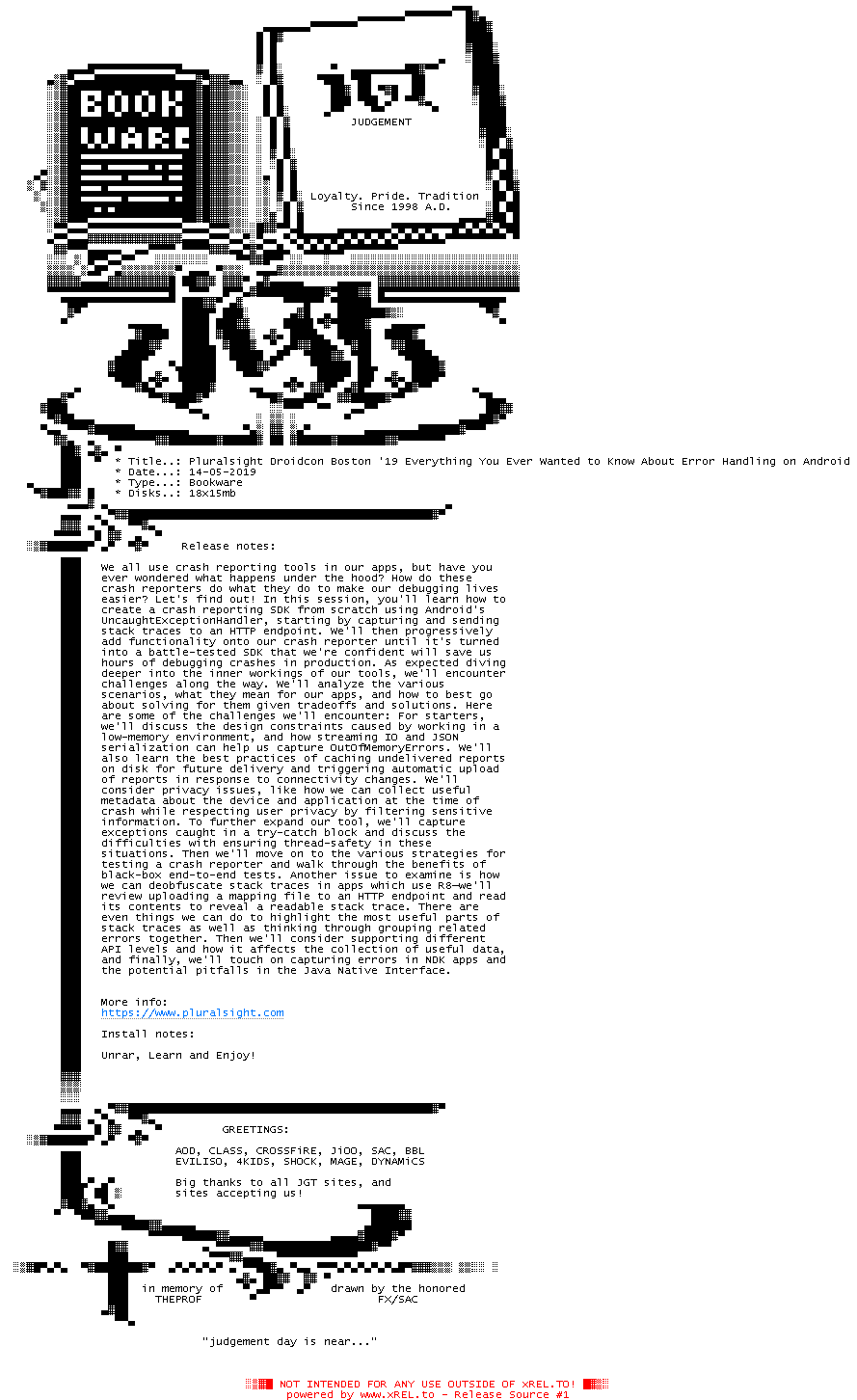
JUDGEMENT
Loyalty. Pride. Tradition
Since 1998 A.D.
* Title..: Pluralsight Droidcon Boston '19 Everything You Ever Wanted to Know About Error Handling on Android
* Date...: 14-05-2019
* Type...: Bookware
* Disks..: 18x15mb
Release notes:
We all use crash reporting tools in our apps, but have you
ever wondered what happens under the hood? How do these
crash reporters do what they do to make our debugging lives
easier? Let's find out! In this session, you'll learn how to
create a crash reporting SDK from scratch using Android's
UncaughtExceptionHandler, starting by capturing and sending
stack traces to an HTTP endpoint. We'll then progressively
add functionality onto our crash reporter until it's turned
into a battle-tested SDK that we're confident will save us
hours of debugging crashes in production. As expected diving
deeper into the inner workings of our tools, we'll encounter
challenges along the way. We'll analyze the various
scenarios, what they mean for our apps, and how to best go
about solving for them given tradeoffs and solutions. Here
are some of the challenges we'll encounter: For starters,
we'll discuss the design constraints caused by working in a
low-memory environment, and how streaming IO and JSON
serialization can help us capture OutOfMemoryErrors. We'll
also learn the best practices of caching undelivered reports
on disk for future delivery and triggering automatic upload
of reports in response to connectivity changes. We'll
consider privacy issues, like how we can collect useful
metadata about the device and application at the time of
crash while respecting user privacy by filtering sensitive
information. To further expand our tool, we'll capture
exceptions caught in a try-catch block and discuss the
difficulties with ensuring thread-safety in these
situations. Then we'll move on to the various strategies for
testing a crash reporter and walk through the benefits of
black-box end-to-end tests. Another issue to examine is how
we can deobfuscate stack traces in apps which use R8 we'll
review uploading a mapping file to an HTTP endpoint and read
its contents to reveal a readable stack trace. There are
even things we can do to highlight the most useful parts of
stack traces as well as thinking through grouping related
errors together. Then we'll consider supporting different
API levels and how it affects the collection of useful data,
and finally, we'll touch on capturing errors in NDK apps and
the potential pitfalls in the Java Native Interface.
More info:
https://www.pluralsight.com
Install notes:
Unrar, Learn and Enjoy!
GREETINGS:
AOD, CLASS, CROSSFiRE, JiOO, SAC, BBL
EVILISO, 4KIDS, SHOCK, MAGE, DYNAMiCS
Big thanks to all JGT sites, and
sites accepting us!
in memory of drawn by the honored
THEPROF FX/SAC
"judgement day is near..."

![]() Registrierte Benutzer können Text-, Hintergrund- und ANSI-Art-Farbe individuell anpassen!
Registrierte Benutzer können Text-, Hintergrund- und ANSI-Art-Farbe individuell anpassen!